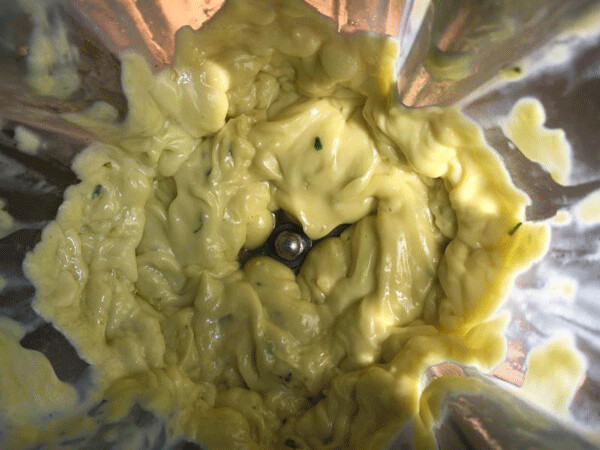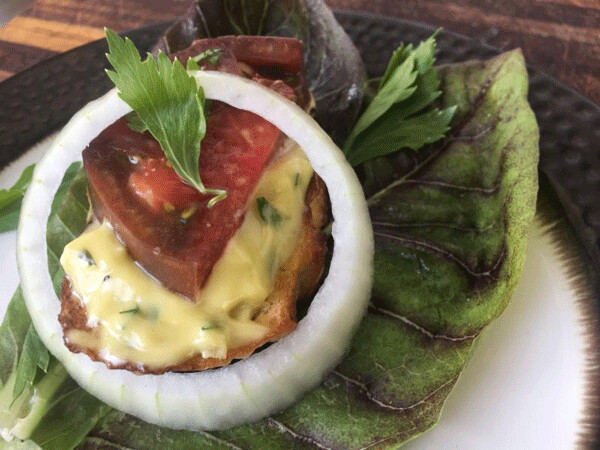Gimme all your Lovage

When I told my wife I was off to find some lovage, she was supportive.
Levisticum officinale, after all, is a close relative of celery, parsley and dill--three of her favorite plants to eat. Lovage is hard to find in stores, but we have a plant. Or at least, we know of a plant. It resides behind the cabin where she and I first lived together. The only problem, from a lovage perspective, is we don’t live there anymore.
I first experienced lovage in the form of Rapunzel brand Vegetable Bouillon with Herbs, a product that practically bends the laws of physics. Imagine, if you can, a vegan broth that doesn’t leave carnivores feeling unfulfilled. The first time I tasted it, I had to check the label to make sure it was legit.
The ingredients were pedestrian: garlic, basil, turmeric, yeast, salt, oil and that trio of celery, parsley and dill. The oddball ingredient was lovage.
It remained on my radar for years, more as a whimsical a word than anything I could picture. I didn’t know if it was a plant, animal, fungus or what.
A few years later at the farmers market I found out what it was, and brought a lovage plant home to the cabin. I planted it near the garden, where it got a lot of water and grew taller than me, like some kind of mutant celery plant on herbal steroids.
Originally brought over by European settlers, lovage remained after settlements were abandoned, doing just fine on its own. This tenacious plant runs wild from Florida to Saskatchewan, but since we moved away from the lovage cabin, the new residents don’t seem to prioritize landscaping. July had been hot, without a single drop of rain, and the town was drying up. As I rode my bike down the gravel alley, I wondered what I would find.
The unfenced yard as a brownscape, with one lovable exception. A patch of green in a parched yard that had been left for dead, the lovage, amazingly, didn’t even look stressed. It was smaller than it used to grow, only about knee-height, but looked happy. I knelt down, and cleaned up some dead stalks around the base, and pulled away some errant grass, and cut some lovage.
The early New Englanders had myriad Old World uses for the plant, the entirety of which is edible. They used to candy the root and chew the seed in order to stay alert during long church services.
Indeed, the seeds will numb your mouth, like Szechuan peppercorns, and the leaves, while not as intense, nonetheless have the piercing aroma of enhanced celery. This bitter mouth buzz makes lovage popular among serious mixologists and edgy cooks alike.
Chopped and tossed with a salad or mixed in a dressing, simmered in soups, rubbed on meat, or mixed into your drink, lovage belongs in a lot of places. If used properly, lightly, lovage doesn’t reveal itself. You want the guests to ponder a mysterious, soulful flavor they can’t put their finger on.
If you don’t have a local stash of lovage, it can be tricky to score. Big city grocers will sometimes stock it, and lovage seed is readily available online, which can be sown in spring or late summer (and chewed year-round in church). It’s worth asking the plant people at farmers market if they know where any living lovage might be found. A quick check at my local stored found lovage in three separate vegetarian bouillon brands, with Rapunzel remaining the best of the lot.
If you can’t find any fresh lovage, and don’t have time to order seeds and grow your own plant, your best option is to purchase lovage extract online. Hawaiian Pharm seems to have the most for sale at the moment, at least at the consumer retail level.
There are many ways to enjoy lovage, but my favorite way is to make what the molecular gastronomist call lovage emulsion. Otherwise known as mayonnaise, that great culinary mystery that makes everything go down better, the recipes for these hi-tech emulsions are tricky, and often involve starting by making an extract. I prefer adding the fresh leaves to a good old fashioned mayo recipe. But if all you have is extract, follow my recipe, and add up to a teaspoon of extract along with the vinegar and lime juice.

Lovage Emulsion
3-6 lovage leaves
One clove garlic, minced or pressed
One whole egg
Lime juice, 1+ tablespoon
Cider vinegar, 1+ tablespoon
Dijon mustard, 1/2 teaspoon
Salt, 1/4 teaspoon
Oil, 1.5 cups (I like a light, fruity olive oil; safflower, sunflower and canola work too)
Process
In a clean blender or food processor, add egg, two tablespoons lime juice, lovage leaves, cider vinegar, salt, dijon and garlic. Blend until smooth. If it’s not enough material for the blade to catch, double the recipe. You won’t be sorry.
Then, as one does when making mayonnaise, cross your heart or do any other ritual you might have, and begin slowly adding the oil in a thin stream with the blade running. Do not add more oil until the first few drops have completely dispersed. Then add a little more. Repeat at a snails pace, blade running, until you’ve added a half a cup, at which point, if you haven’t screwed up, you can add oil a little more quickly. After about a cup you will hear the sound thicken. Keep going until it’s all stuck to the side of the blender and not sliding down. Scrape it off with a rubber spatuala.
The bitter earthiness of the lovage gives a delectable balance to the puffy clouds of creamy dreamy, mayonnaise, that unlikely embrace of oil and water. If you’re gonna use lovage mayo on meat or fish, consider stirring some horseradish into the finished product.
Whatever you put it on, I fancy this lovage sauce is worth all the commotion, and hope you’ll second that emulsion.

